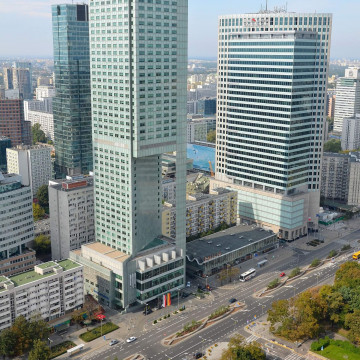Postmodernism - architectural style definition
Postmodernism is an architectural style that emerged in the 1970s and lasted until the late 1990s. It is characteristic of architecture after modernism, which was more abstract and minimal. Postmodernism rejects the abstract and minimalist approach to design and focuses on the usability, functionality and aesthetics of buildings.
One of the main assumptions of postmodernism is to pay attention to the external appearance of the building, which is to be memorable and distinctive. Architects in postmodernism like to experiment with forms and shapes, adding various ornaments, ornaments and decorations, such as columns, arches, pilasters or friezes. Buildings in this style often resemble historic buildings or are inspired by architecture from different countries and eras.
Another important element of postmodernism is the contrast between the old and the new. Architects like to combine different styles and materials, creating a mix of traditional and modern elements. They are often buildings that have a historic appearance on the outside, but are modern and functional on the inside.
Postmodernism also promotes the use of colors and patterns, which adds personality and character to buildings. Architects like to combine different colors and patterns to create very decorative and striking buildings.
Postmodernism is an architectural style that emerged in the second half of the 20th century as a reaction to the dominance of modernism. Unlike stark modernist minimalism, postmodernism uses historical, cultural, and symbolic elements, and often transcends traditional boundaries of form and style.
Precursors of postmodernism
Robert Venturi: American architect who in 1966 published the influential book "Complexity and Contradiction in Architecture" in which he questioned the principles of modernism and promoted complexity and diversity in architecture.
Aldo Rossi: Italian architect and theorist who emphasized the importance of historical and urban context for architecture.
The most popular postmodern buildings
Guggenheim Museum Bilbao, Spain (Frank Gehry): This is one of the most iconic works of postmodernism. The building consists of organic forms made of stainless steel panels.
AT&T Building in New York, USA (Philip Johnson and John Burgee): Features a distinctive envelope gable with stone arcades reminiscent of classical architecture.
Pompidou Center in Paris, France (Renzo Piano and Richard Rogers): This is an eccentric structure where pipes, ventilation pipes and external stairs are exposed outside the building.
Dancing House in Prague, Czech Republic (Vlado Milunić and Frank Gehry): Also known as "Ginger and Fred", this building is an example of asymmetrical, dynamic forms of postmodernism.
Kunsthaus Graz in Graz, Austria (Peter Cook and Colin Fournier): This building is famous for its unconventional shape, resembling huge shellfish.
Bank of America Plaza in Tampa, Florida - At 579 feet tall, this building is the tallest building in the city and one of the largest in the entire state of Florida. It was designed by Kohn Pedersen Fox Associates and built in 1992. It is characterized by decorative elements, such as columns and cornices, and colored glass.
Hotel Bonaventure in Los Angeles - This hotel was designed by architects John C. Portman Jr. and John C. Portman Sr. and built in 1976. It is characterized by a massive structure and decorative elements such as columns and cornices. It is one of the most important works of postmodernism in the city of Los Angeles.
Los Angeles Art Center - is one of the most important works of postmodernism in the world. It was designed by architect Frank Gehry and built in 1983. It is characterized by irregular shapes and decorative elements such as columns and cornices. It is one of the most important art venues in the city of Los Angeles.
These are just a few examples of postmodern buildings that have gained popularity and recognition around the world. The style continues to develop and architects continue to experiment with different forms and ideas of postmodernism.










